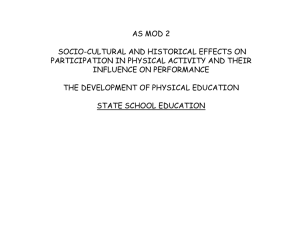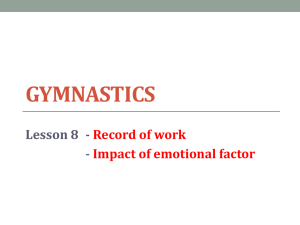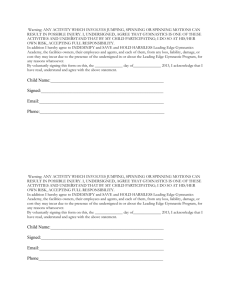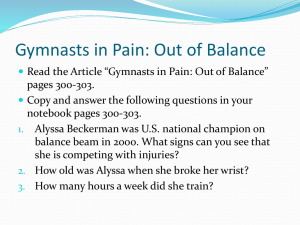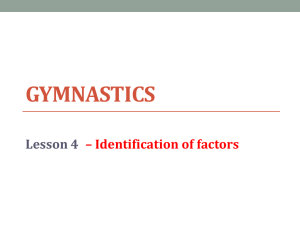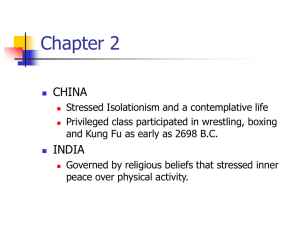File - PE Course Specification
advertisement
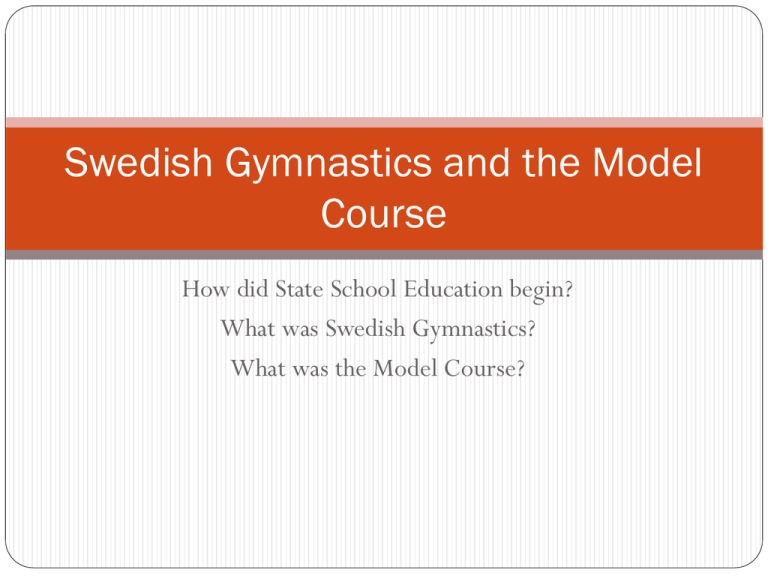
Swedish Gymnastics and the Model Course How did State School Education begin? What was Swedish Gymnastics? What was the Model Course? History and Characteristics History Prior to 1870 the working classes had no formal education Education act was introduced in in 1870 making it compulsory for all children to attend state school Not popular as children could no longer work and vital income would be lost Purpose was to educate working class and keep the children away from unsafe factory work Employers wanted a more disciplined and educated work force Basic skills of reading, writing and arithmetic Religious education also important to instil moral values which middle class saw as being important Working classes would be factory workers obeying orders from their employers Emphasis place on discipline and obedience rather than leadership and decision making Characteristics • Free of charge • Limited space • Built in local areas • No recreational activities • Day schools • Restrictions on activities offered • Catered for both sexes Timeline of State school development Date Development in state schooling Physical activities Pre 1870 No formal state education, some church provision ---------------------------------------------- 1870-1902 Foster Education act, foundations laid Drill training linked to Swedish gymnastics 1902-1904 Poor performance in Boer War blames on lack of fitness and discipline among troops Military drill in the form of the Model Course delivered by NCOs 1904-1933 Centralised government control of physical activity in state school Early syllabus of physical training 1933-1952 Last centralised syllabus of physical training Content more varied, including gymnastics and small sided games 1952-1988 Influence of child-centred, self discovery learning in primary schools ‘Moving and growing’ for primary schools 1988present day Education reform act, National curriculum PE introduced Wide range of activities to be taught with attainment levels in four key stages Swedish Gymnastics (1870-1902) Swedish gymnastics formed the basis of physical activity in state school education Board of Education chose it over German as it needed no gymnastic equipment Based on therapeutic principles Curative practices to maintain health Scientific knowledge of the body Free standing and free flowing Taught in instructional style However the heavy losses suffered by Britain during the Boer war (1899-1902) was blamed on Swedish gymnastics not being rigorous enough- physically or mentally The Model Course (1902-1904) Replaced Swedish gymnastic in 1902 Aimed to improve health and fitness of working class for military service give training in the use of weapons develop obedience and discipline in preparation for work and war Non Commissioned Officers (NCOs) delivered military drill exercises taken from war office Command style authoritarian teaching, Instructions such as ‘attention’ completed in unison The Model Course (1902-1904) Issues Military needs became more important than educational theory Education took a step backwards (innovation replaced by conformity) Everyone taught together (sexes and ages) Children treated as soldiers Dull, repetitive and cheap (only equipment was for weapon training) Lowered status of physical activity The Model Course only lasted 2 years as it had no educational focus, didn’t cater for children’s needs and wasn’t that successful in improving health and fitness
